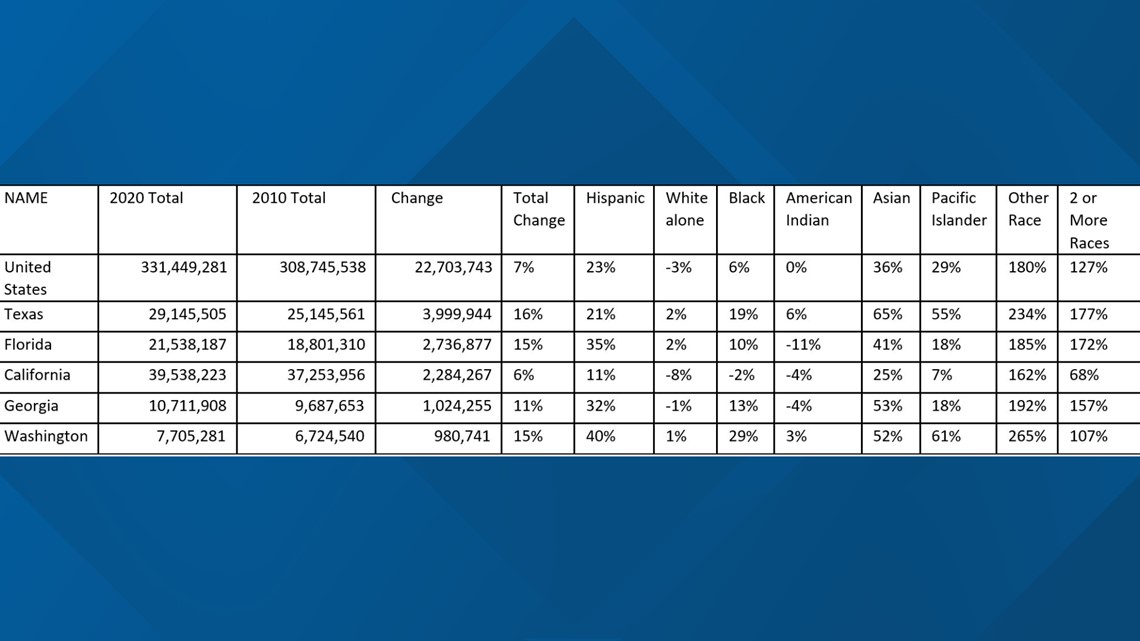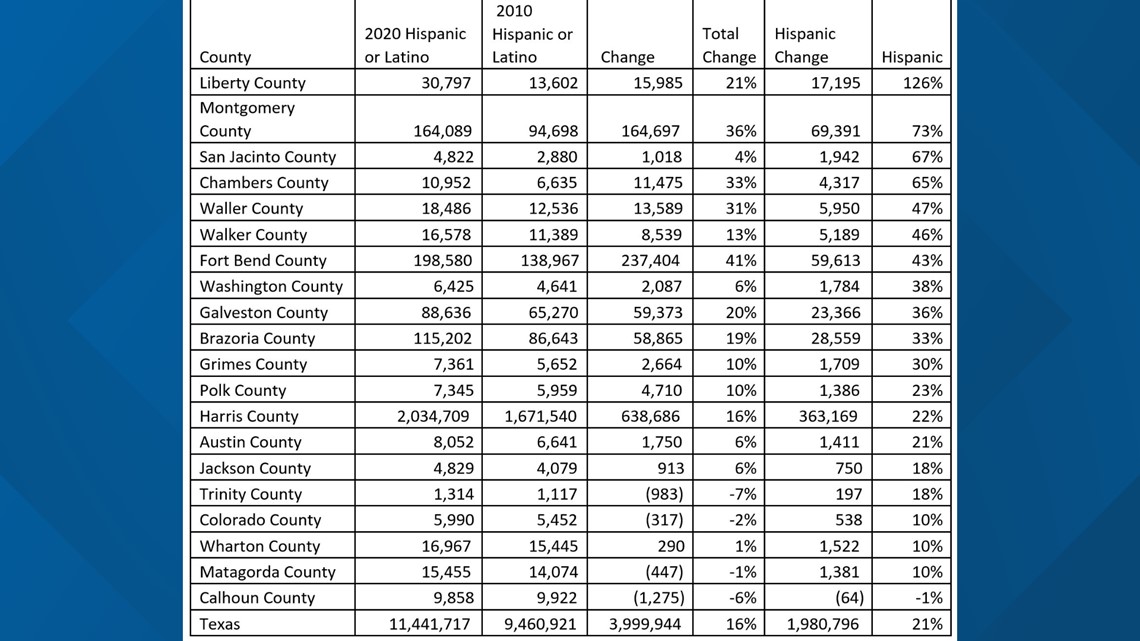HOUSTON — Texas has seen the largest increase in residents than any other state in the past decade, according to 2020 U.S. Census data, and Houston is among the metro areas with the largest growth.
According to the data released Thursday, Texas added nearly 4 million residents from 2010 to 2020. The country overall added 22 million people in the last 10 years.


RELATED: Why does the 2020 US Census matter?
The Houston metro area added more than 1 million people from 2010 to 2020, the third-highest in the U.S. Houston has now moved from the sixth-largest metro area in 2010 to the fifth-largest in 2020.
The new data shows Fort Bend, Montgomery and Chambers counties are among the 10 fastest-growing counties in the state. Fort Bend County added more than 237,000 residents in the last decade, a 41-percent increase. Harris County, the Houston area’s largest county, added more than 600,000 new residents from 2010 to 2020, a 16-percent increase. Chambers County saw a 33% increase with 11,475 new residents.


When broken down by ethnicity, according to the data, most of Harris County’s growth was in its Hispanic population. The Hispanic population grew even faster in outlying counties, including in Liberty County where it more than doubled -- the largest jump in the entire state. Overall, the data show the country's white population is aging and has fallen to its smallest share of the total population on record.


For more information on the U.S. Census Data, click here.
Why does the census matter?
The House of Representatives has 435 seats and they’re divvied up based on population.
States that are growing add seats, while states that are shrinking lose them. Texas, for example, grew its population by nearly 4 million people, which means we’re gaining two House seats.
That gives Texas 38 in all.
Our state is one of six to gain congressional seats. Seven states lost one.
The census also impacts how much money states, counties and cities get in federal help. We’re talking about everything from schools to hospitals to roads to public works.
In fact, money for COVID-19 testing and CARES Act emergency funds was distributed based on the 2010 Census. The population count is also used for disaster response, like when a hurricane hits.
So between funding and representation, there’s a lot on the line. That’s why local leaders were so adamant that Texas participate in the Census.
Aside from voting, it’s arguably one of the strongest ways to make your voice heard at the local, state and national level.

